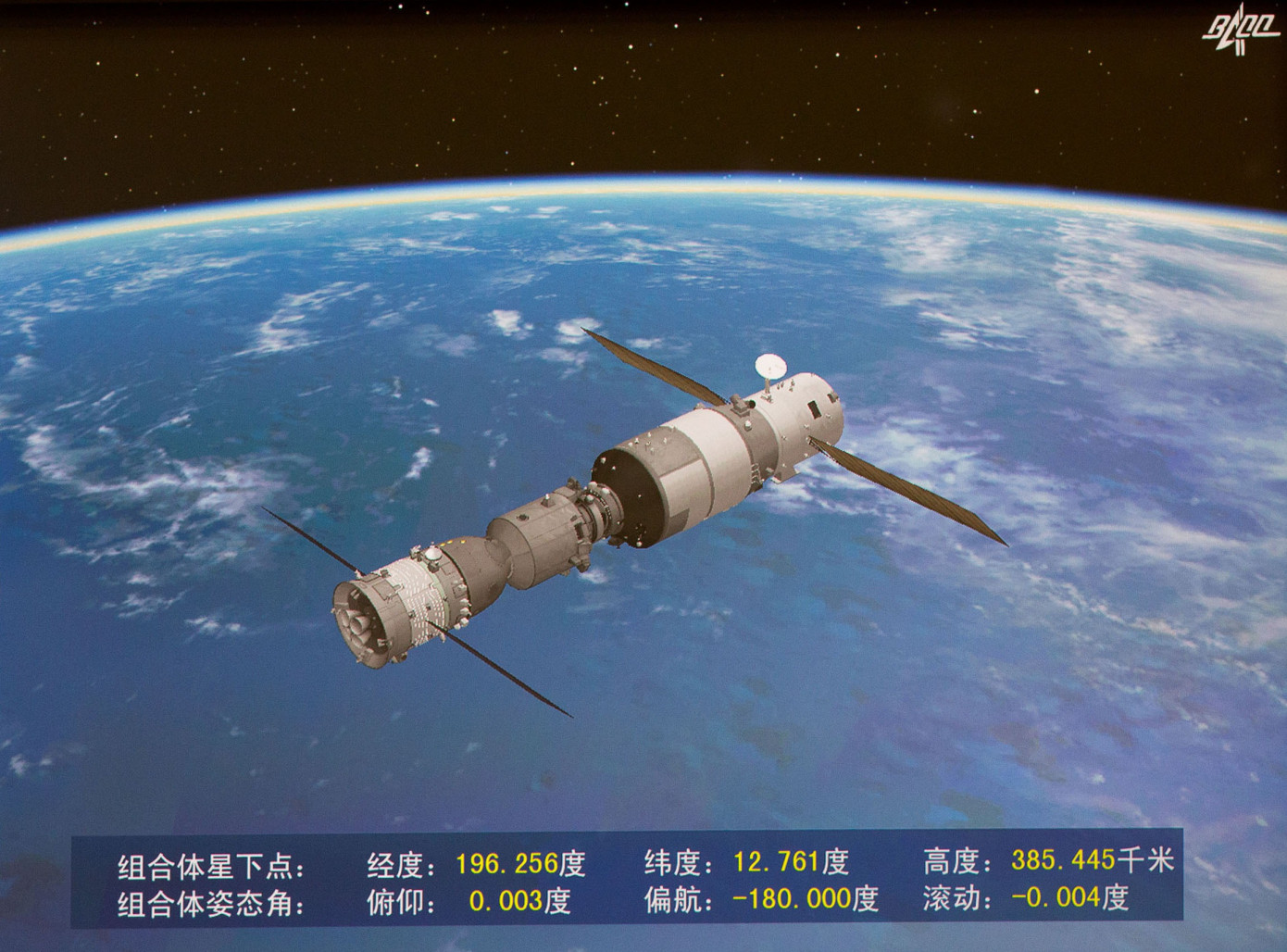Chinese Space Station Tiangong-2 Destroyed in Fiery Re-Entry Over Pacific Ocean

A Chinese space station fell out of the sky today (July 19), according to Agence France-Presse. But unlike the last time this happened, China was in control the whole time.
The Chinese National Space Administration (CNSA) said in an earlier statement that Tiangong-2, the country's second experimental station, would "leave orbit and re-enter the atmosphere." At 34 feet (10 meters) long and 19,000 lbs. (8,600 kilograms), the orbiter was a bit larger than a northern bottlenose whale — though the station's solar panels made it a bit of an odd-looking whale, with a 60-foot (18 m) wing span. CNSA said Tiangong-2 would burn up almost entirely in the atmosphere, before any remnants crashed into a remote part of the Pacific Ocean called Point Nemo.
That's a very different situation from the demise of Tiangong-2's predecessor, Tiangong-1, which fell uncontrolled from orbit on April 1, 2018 (though, coincidentally, Tiangong-1 ended up in nearly the same part of the Pacific). [Gallery: Tiangong-1, China's First Space Laboratory]
CNSA officials said Tiangong-2 had completed all of its experiments and exceeded its planned two-year operational life by more than a year. The station hosted only one set of astronauts, back in October and November 2016, but it had since hosted several robotic missions, as Live Science sister site Space.com reported.
- Amazing Moon Photos from NASA's Lunar Reconnaissance Orbiter
- Death by Asteroid: The Most Likely Ways for a Space Rock to Kill You Way to Be Weird, Earth: 10 Strange Findings About Our Planet in 2018
Originally published on Live Science.
Sign up for the Live Science daily newsletter now
Get the world’s most fascinating discoveries delivered straight to your inbox.










